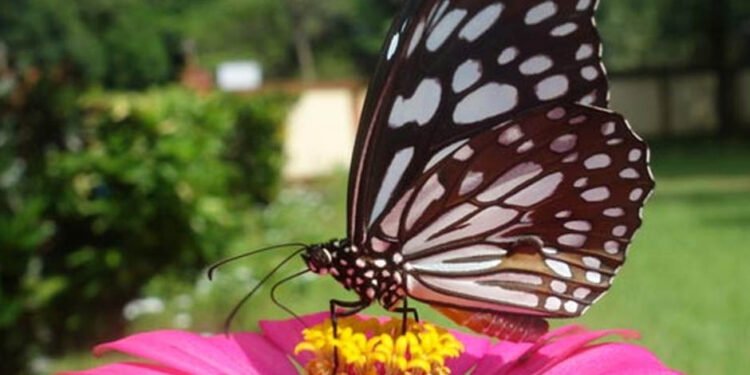There has been a serious decline of wildlife throughout the UK in recent years. This has a lot to do with the huge rise of agriculture that has resulted in the destruction of natural habitats. With the loss of natural habitats survival rates are dwindling, it is therefore more important than ever that homeowners offer a safe sanctuary for wildlife in their garden. If you’re unsure of where to start the following tips provide easy and low-maintenance adjustments that are certain to attract an abundance of wildlife to your garden.
Offer food and water
To attract and keep animals in your garden a consistent supply of fresh water and nutritious food is essential. Investing in a shallow dish or bird bath can be beneficial in providing your garden’s wildlife with clean water. Ensure that you are refilling this dish regularly so that animals have a constant supply of fresh water.
It is recommended that homeowners purchase specialised wildlife feed, to provide animals with the essential nutrients needed throughout the nesting and hibernation seasons. For birds especially, nuts, seeds and mealworms are encouraged. To prevent other animals or household pets from stealing the food, invest in an appropriate feeder. It is important to note that before placing any food in your garden it is recommended to double check that it is suitable for the animal being fed, different types of food may not be suitable for certain animals.
Keep it Natural
The most obvious step for creating a wildlife hub is to embrace nature as much as possible. This requires ditching the aesthetically pleasing garden design and instead embracing a natural landscape. This process is known as ‘rewilding’ and involves letting your garden grow freely to provide an authentic and natural home for wildlife. This can be particularly beneficial for those who don’t have much time on their hands or have little interest in gardening. If you are hesitant to rewild the whole of your garden then you can simply rewild a small section and maintain the rest of your garden as normal.
If you’re unsure of where to start you can simply reduce the amount of times you mow your lawn, allowing it to grow more freely. In addition, it is important to avoid planting non-native plant and flower species to keep your garden environment as authentic as possible. To achieve this incorporate the type of flowers that grow naturally in your area. However, if your garden consists mostly of patio or gravel, rewilding can be difficult. To imitate a ‘natural’ space as much as possible try incorporating greenery, using a man-made flower bed or a range of potted plants.
Stop using pesticides
Pesticides, although beneficial in removing tough weeds and deterring pests, can be extremely harmful to the wildlife within your garden. In fact, pesticides are known to be the largest killer of insects, birds and various other species, so it is extremely important to stop using them if you stand a chance at creating a safe haven for wildlife. Instead of using pesticides you can opt for natural methods of weed removal and use less harmful ingredients like coffee grounds to deter pests.
Offer shelter
Suitable shelter offers warmth and safety for wildlife, making it extremely important when retaining animals and insects within your garden. There are plenty of pre-made shelters that can be purchased online or in stores, like bird boxes, hedgehog homes and insect houses. To ensure that your shelter is used by wildlife it must be placed in an appropriate location, for example, a bird box should be attached at a height to a tree or wall. It is also beneficial to choose a secluded area as this can be less intimidating. Alternatively, you can also create DIY shelters with reused materials like old planks of wood, bark, leaves and so on.
Be mindful of pets
It is important to be mindful when allowing your pets to roam around the garden as they may harm or disturb wildlife. When your pets are outside try and keep a close eye on them to make sure they are keeping their distance from wildlife. In addition, it may help to keep your wildlife shelters in a secluded location where your pet won’t be likely to go or create a safe zone that is cordoned off. It can be difficult to keep pets away from wildlife as naturally they are bound to go near, however, it is important to be as vigilant as possible to keep wildlife safe.












